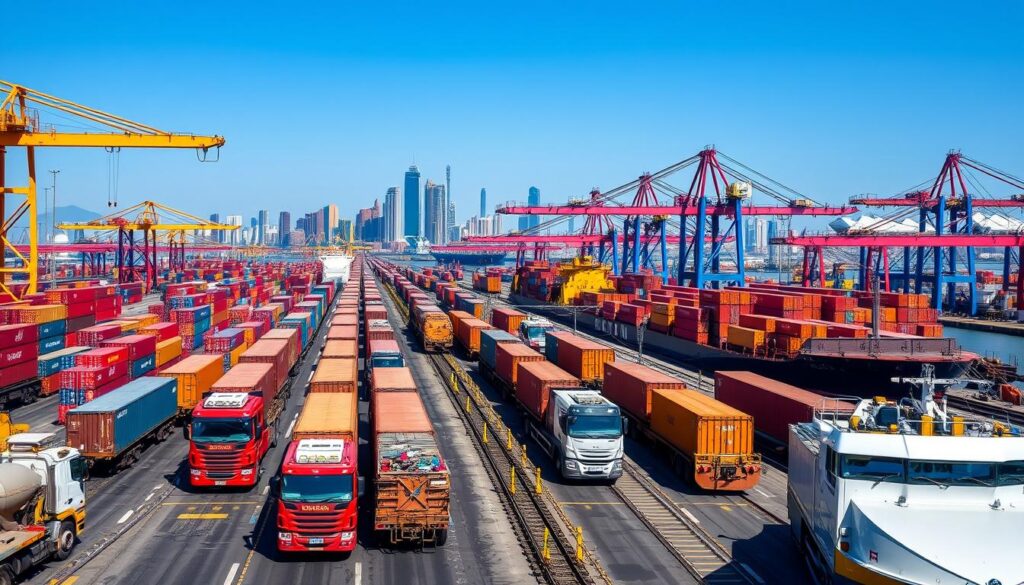In today’s fast-paced business world, efficient freight transportation is key to success. Whether shipping across the country or globally, your choice of transportation affects your bottom line and delivery times. This guide will help you find the best freight solution for your business.
The freight transportation industry offers many options. You can choose from road freight transportation, rail freight transportation, air freight transportation, and maritime freight transportation. Each has its own benefits and drawbacks. The right choice depends on your goods, the distance, and your budget.
We’ll explore each freight transportation method in detail. We’ll look at the pros and cons to help you make a smart choice. We’ll also talk about the importance of freight transportation arrangement and navigating the national freight transportation association and other resources.
This guide is for everyone, from small business owners to large supply chain managers. It will give you the knowledge and tools to improve your freight transportation services. Let’s explore the world of freight transportation together!
Key Takeaways
- Understand the different modes of freight transportation, including road, rail, air, and maritime options.
- Analyze the pros and cons of each freight transportation method to determine the best fit for your business.
- Learn how to navigate the complexities of freight transportation arrangement and industry resources.
- Discover strategies to optimize your freight transportation services and streamline your supply chain.
- Stay up-to-date with the latest trends and regulations in the freight transportation industry.
Understanding the Different Modes of Freight Transportation
Businesses have many ways to move goods from one place to another. Each method has its own benefits and drawbacks. The choice depends on cost, speed, and what’s being shipped. Let’s look at the main four: road, rail, air, and sea.
Road Freight Transportation
Road freight transportation is very common and flexible. It uses trucks and other vehicles to move goods on roads. It’s fast and can reach many places, but it can be pricey and affected by traffic and weather.
Rail Freight Transportation
Rail freight transportation moves goods by train. It’s cheaper for long trips and good for the environment. But, it’s less flexible and can’t reach all places.
Air Freight Transportation
Air freight transportation is the fastest, moving goods by plane. It’s perfect for urgent or fragile items. But, it’s expensive and uses a lot of fuel.
Maritime Freight Transportation
Maritime freight transportation uses ships to move goods. It’s great for big or heavy items over long distances. It’s the cheapest for international shipping, but slowest.
Choosing the right way to move goods depends on your needs and budget. Knowing what each method offers helps make the best choice for your business.
Freight Transportation: Weighing the Pros and Cons
Choosing a freight transportation method requires careful consideration. Costs, speed, reliability, flexibility, and environmental impact are key factors. They all influence your decision.
Road freight is flexible and fast but pricey and less green than rail or sea. Rail freight is cheaper for long, big shipments but less accessible. Air freight is the quickest but most expensive and harmful to the environment.
Maritime freight is the cheapest for international moves but slow. Knowing each mode’s strengths and weaknesses helps businesses pick the best option. This ensures their needs and values are met, including green transportation.


fvff